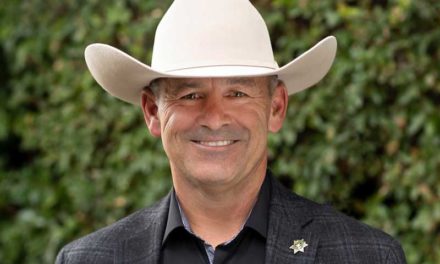California ranks first nationwide in paying for programs that prevent kids from smoking and help smokers quit, but it is not cause for celebration — yet. That’s because the tobacco industry outspends tobacco prevention efforts in California by more than $250 million, and nearly 11,000 California children will become daily smokers this year.
California is spending $327.8 million this year on tobacco prevention and cessation programs, which is 94.2 percent of the $347.9 million recommended by the Centers for Disease Control and Prevention (CDC). Meanwhile, tobacco companies spend $581.1 million every year to market their deadly and addictive products in California, according to a report released by leading public health organizations.
Long a national leader in the fight against tobacco, California tops this year’s report after taking historic action in the fight against tobacco. In November 2016, California voters overwhelmingly approved Proposition 56, a $2-per-pack tobacco tax increase, the single largest ever approved by any state. The tax went into effect in January. The ballot initiative also increased funding for the state’s tobacco prevention and cessation programs by $252 million this year to boost California up 20 spots in the rankings over last year.
In addition to the increase in tobacco prevention spending, California recently strengthened its comprehensive smoke-free law and raised its tobacco age to 21. Also in the past year, San Francisco, Oakland and other cities and counties have prohibited or restricted the sale of menthol cigarettes and other flavored tobacco products, especially to youth. Together, these actions prevent children from using tobacco, help current smokers quit and save lives.

Smoking
“We applaud California for providing strong leadership in the fight against tobacco, the nation’s leading cause of preventable death,” said Matthew L. Myers, President of the Campaign for Tobacco-Free Kids, in a prepared statement. “California is showing how to win the fight against tobacco and make the next generation tobacco-free, but we have more work to do to beat the tobacco industry’s campaign to addict children. Every city, county and state needs to do its part to help achieve these goals.”
In California, 4.3 percent of high school students still smoke. Tobacco use claims 40,000 California lives and costs the state $13.3 billion in health care bills annually.
The report also found that California will collect $2.6 billion in revenue this year from the 1998 tobacco settlement and tobacco taxes but will spend just 12.7 percent of the money on tobacco prevention programs.
The report – “Broken Promises to Our Children: A State-by-State Look at the 1998 Tobacco Settlement 19 Years Later” – was released by the Campaign for Tobacco-Free Kids, American Cancer Society Cancer Action Network, American Heart Association, American Lung Association, the Robert Wood Johnson Foundation, Americans for Nonsmokers’ Rights and Truth Initiative.
The U.S. has reduced smoking to record lows – 15.1 percent among adults and 8 percent among high school students. But tobacco use still kills more than 480,000 Americans and costs the nation about $170 billion in health care bills each year.
The report also highlights large disparities in who smokes and who suffers from tobacco-related diseases in the United States. Smoking rates are especially high in a swath of 12 states in the Midwest and South, an area called “Tobacco Nation” in a recent Truth Initiative report. Nationwide, smoking rates are highest among people who live below the poverty level and have less education, American Indians/Alaska Natives, LGBT Americans, those who are uninsured or on Medicaid, and those with mental illness. These differences are in large part due to the tobacco industry’s targeting of vulnerable populations through advertising, price discounting and other marketing strategies.
By funding tobacco prevention and cessation programs at the CDC’s recommended levels, states can reduce tobacco use among all Americans. But most states are falling far short:
The states will collect $27.5 billion this year from the tobacco settlement and tobacco taxes, but will spend less than 3 percent of it ($721.6 million) on tobacco prevention programs. The $721.6 million that the states have budgeted for tobacco prevention is a small fraction of the $3.3 billion the CDC recommends. Not a single state funds tobacco prevention programs at CDC-recommended levels, and only one other state – Alaska – provides more than 90 percent of the recommended funding.
States with well-funded, sustained tobacco prevention programs have seen remarkable progress. Florida, with one of the longest-running programs, has reduced its high school smoking rate to 5.2 percent, one of the lowest rates ever reported by any state.
The report and state-specific information can be found HERE.
Image Sources
- California No. 1 In Protecting Kids From Tobacco: Shutterstock







